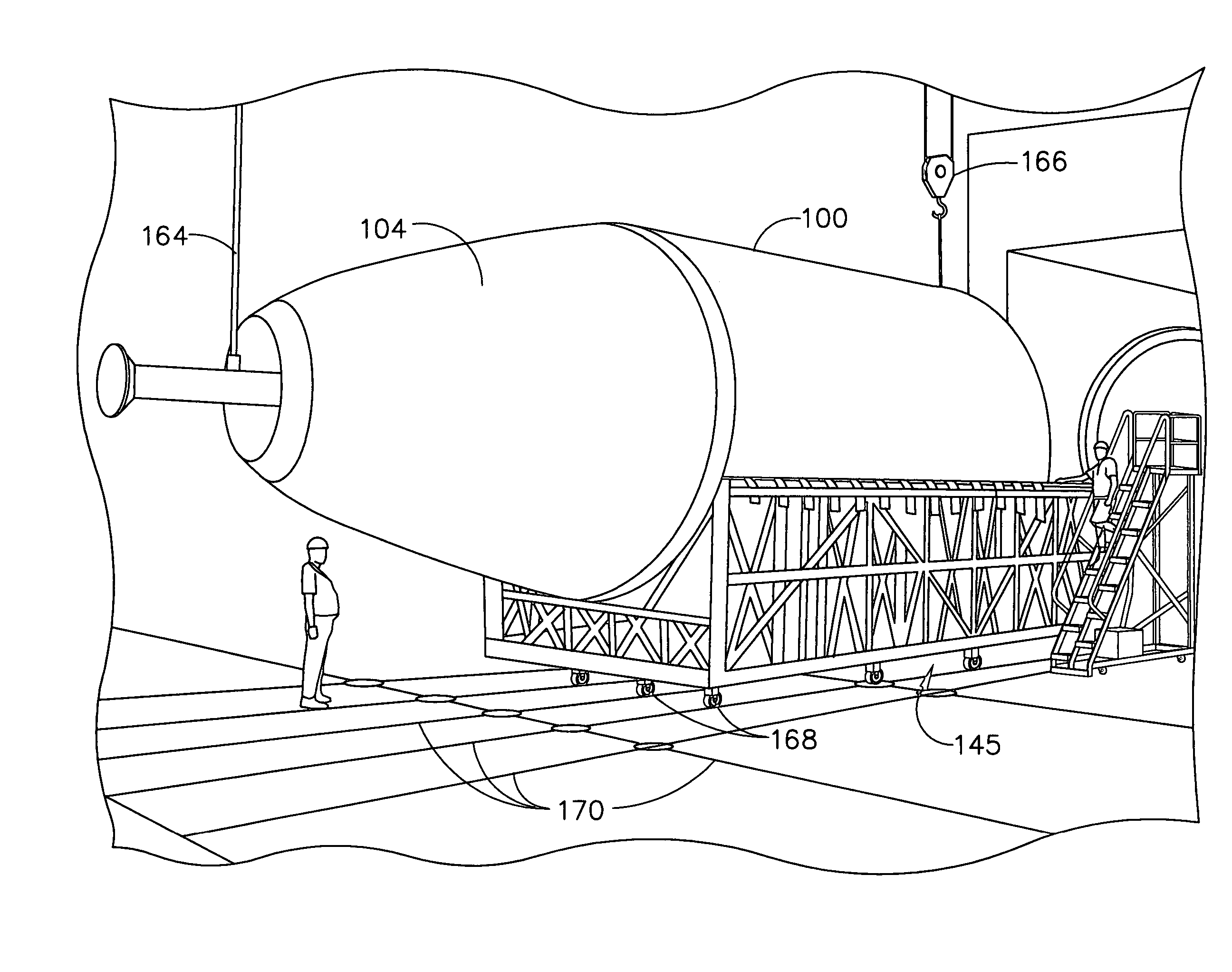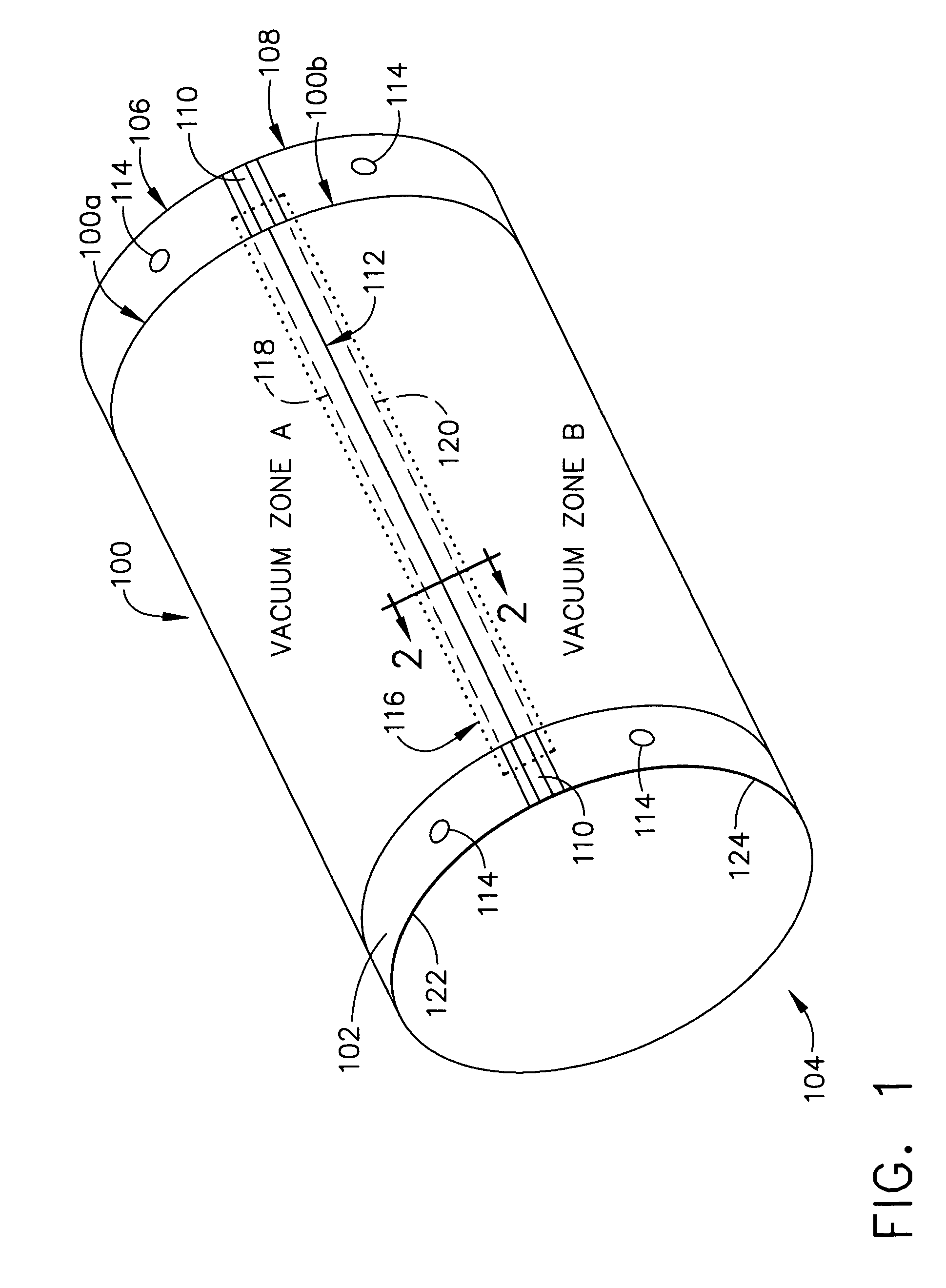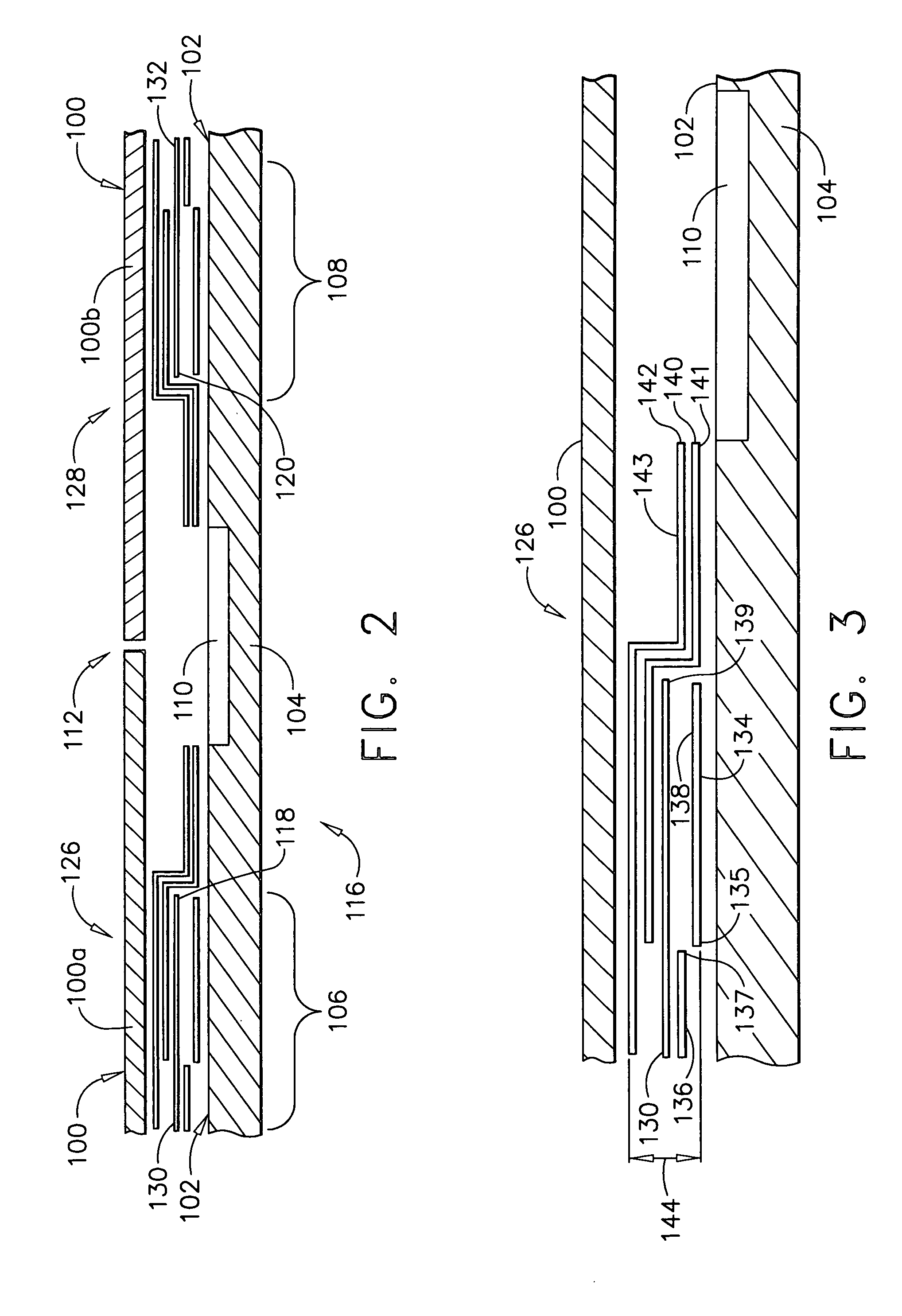Method of transferring large uncured composite laminates
a composite laminate and large-scale technology, applied in the direction of manufacturing tools, transportation and packaging, efficient propulsion technologies, etc., can solve the problems of increasing cost, reducing fabrication efficiency, and not providing an interference-free means for automated processes to lay multiple parts, so as to achieve the effect of reducing manufacturing efficiency, low capital equipment investment, and smoothness
- Summary
- Abstract
- Description
- Claims
- Application Information
AI Technical Summary
Benefits of technology
Problems solved by technology
Method used
Image
Examples
Embodiment Construction
[0033]The following detailed description is of the best currently contemplated modes of carrying out the invention. The description is not to be taken in a limiting sense, but is made merely for the purpose of illustrating the general principles of the invention, since the scope of the invention is best defined by the appended claims.
[0034]The Boeing Company is exploring a variety of methods and tools for making large composite structures. The present application describes an invention that is one of a family of inventions for accomplishing this goal The present application is related to the following co-pending U.S. patent applications that are part of this family: U.S. patent application Ser. No. 10 / 646,509, entitled “Multiple Head Automated Composite Laminating Machine For The Fabrication Of Large Barrel Section Components”, filed Aug. 22, 2003; U.S. patent application Ser. No. 10 / 646,392, entitled “Automated Composite Lay-Up To An Internal Fuselage Mandrel”, filed Aug. 22, 2003;...
PUM
| Property | Measurement | Unit |
|---|---|---|
| diameter | aaaaa | aaaaa |
| compaction pressures | aaaaa | aaaaa |
| diameter | aaaaa | aaaaa |
Abstract
Description
Claims
Application Information
 Login to View More
Login to View More - R&D
- Intellectual Property
- Life Sciences
- Materials
- Tech Scout
- Unparalleled Data Quality
- Higher Quality Content
- 60% Fewer Hallucinations
Browse by: Latest US Patents, China's latest patents, Technical Efficacy Thesaurus, Application Domain, Technology Topic, Popular Technical Reports.
© 2025 PatSnap. All rights reserved.Legal|Privacy policy|Modern Slavery Act Transparency Statement|Sitemap|About US| Contact US: help@patsnap.com



